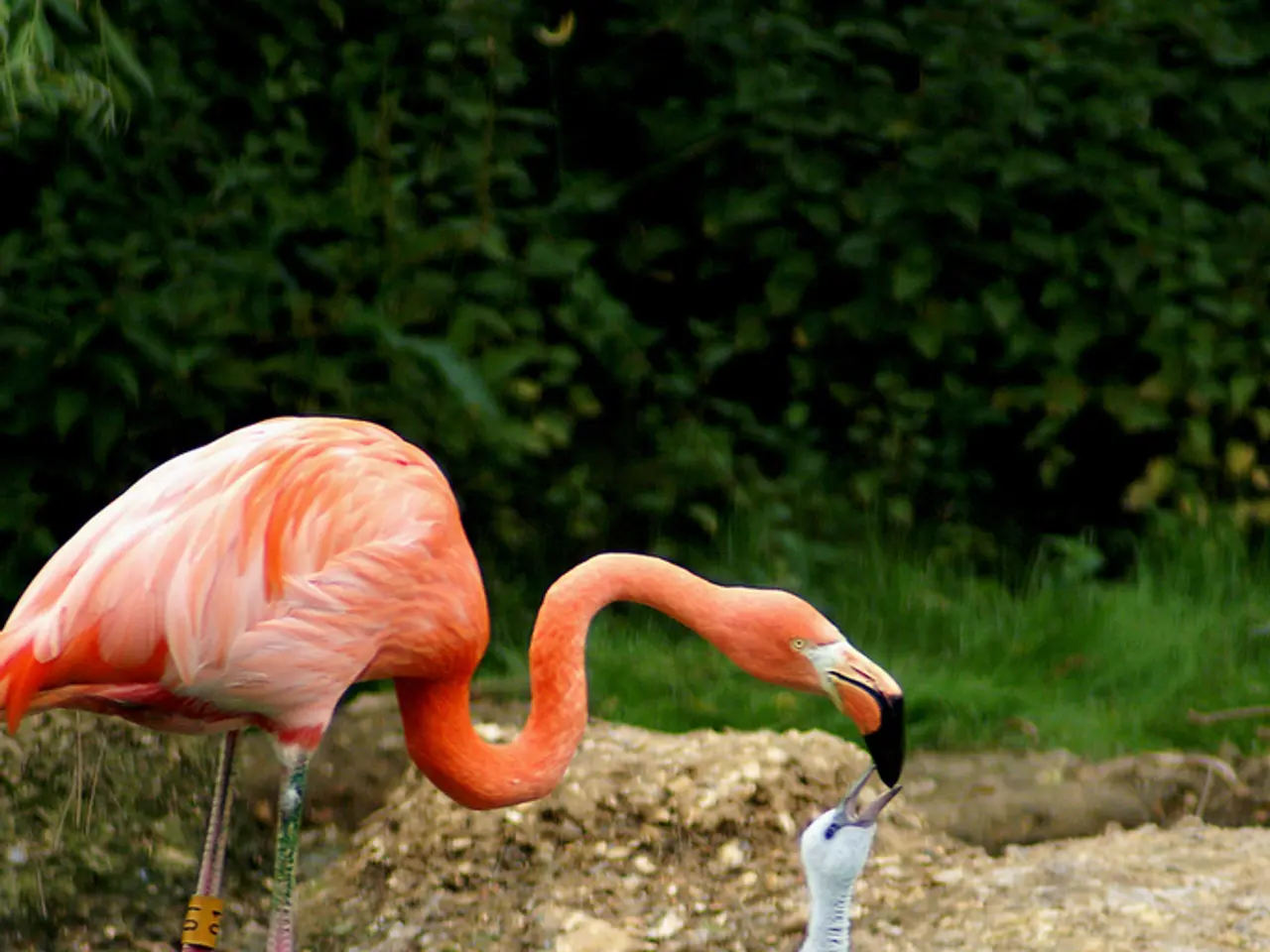Exploring Vibrant Orange Avians of the Wild: Unveiling the Orange Bird Phenomenon in Nature's Arena
In the lush woodlands and suburbs of North America, a group of birds with a striking orange hue can often be found. These orange-feathered avians are not only beautiful to look at, but they also have fascinating characteristics, habitats, and behaviors that make them unique.
The Baltimore Oriole, known for its black and orange plumage and hanging nests, is one such bird. However, the American Robin, with its iconic bright orange-red chest, is another. Despite their similarities, these two birds have different feeding habits: Robins are ground-feeders, while Orioles are high-canopy sippers of nectar and nibblers of fruit.
One of the reasons for the orange coloration in birds is the presence of carotenoids in their diet, which includes fruit, seeds, insects, and crustaceans. This pigment not only gives them their vibrant hue but also serves a purpose. For instance, in the case of the Baltimore Oriole, it signifies good health and strong genes to potential mates.
Evolution has favored orange feathers for mate attraction, as they signify good health and strong genes. This is also true for the American Robin, whose rust-orange chest is a result of eating berries such as hawthorn and juniper.
The food supply of these orange birds is threatened by climate change, pesticide use, and a lack of vibrant color plumage-requiring food sources. This is a serious concern, as many species of orange birds, such as the American Redstart, Blackburnian Warbler, Altamira Oriole, and the Cock-of-the-Rock, are all facing challenges due to habitat loss and other factors.
Conservation efforts are underway to help these vibrant birds. These include land acquisition programs in stopover habitats, encouraging native plantings and pesticide-free yards, and citizen-scientists and bird banding schemes for population observation. By offering nectar feeders, planting native fruit trees or shrubs, and adding nesting options like hanging baskets, we can do our part to attract these beautiful birds to our yards.
The Cock-of-the-Rock, native to humid South American forests, is an example of a tropical orange bird. Males are bright orange with a large crest, while females are duller with smaller crests. They perform elaborate lek courtship displays where females select mates based on dancing.
Other orange birds include the American Redstart, a small warbler with bright orange patches on tail, wings, and sides, and the Blackburnian Warbler, known for its brilliant yellow-orange face and throat. The Altamira Oriole, a large songbird with bright orange and black plumage, is also a common sight in North America.
In conclusion, the world of orange birds is diverse and fascinating. From the deciduous and mixed forests of North America to the humid tropical forests of South America, these birds occupy a variety of habitats. By understanding their adaptations and conservation needs, we can help ensure their survival and continue to enjoy their vibrant presence in our natural world.
- Not only are the Baltimore Oriole and American Robin fascinating due to their orange feathers, but other birds like the American Redstart, Blackburnian Warbler, Altamira Oriole, and Cock-of-the-Rock also exhibit striking orange plumage.
- Aside from birdwatching, hobbies such as fashion-and-beauty, food-and-drink, home-and-garden, pets, travel, cars, and shopping can provide enjoyable activities for one's lifestyle.
- By planting native fruit trees or shrubs, adding nesting options like hanging baskets, and offering nectar feeders, you can help attract these beautiful orange birds to your yard as part of conservation efforts.
- A growing number of people embrace road trips and vacation homes for travel, while others might focus on collecting rare cars or pursuing outdoor sports as hobbies.
- The conservation of orange birds facing challenges due to habitat loss and other factors is a significant concern, especially for species like the American Redstart, Blackburnian Warbler, Altamira Oriole, and the Cock-of-the-Rock.




